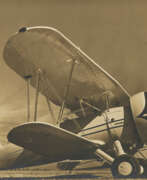Margaret Bourke-White (1904 - 1971)

Margaret Bourke-White
Margaret Bourke-White was an American photographer and photojournalist. She studied photography at the Clarence H. White School of Photography. White, where she developed her trademark style using dramatic angles and strong contrasts of light and shadow.
Burke-White was one of the first women photographers to work for Life magazine, and her images became synonymous with the magazine's coverage of major world events such as World War II and the Korean War. She was also the first woman photographer to work in war zones during World War II, where she captured powerful images of warfare and its impact on civilians.
In addition to war photography, Bourke-White also documented the Great Depression in the United States and was one of the few photographers to gain access to the Soviet Union in the 1930s where she documented Soviet industrialization and the lives of ordinary people.
Bourke-White's work was known for its powerful impact and stark realism. She often risked her safety to get the perfect shot and her images continue to inspire photographers today. She published several books of her work, including 'Eyes on Russia' and 'Dear Fatherland, Rest in Peace'.
Bourke-White left behind a legacy as one of the greatest photojournalists of the 20th century.
| Date and place of birt: | 14 june 1904, New York City, USA |
|---|---|
| Date and place of death: | 27 august 1971, Stamford, USA |
| Nationality: | USA |
| Period of activity: | XX century |
| Specialization: | Artist, Journalist, Photographer, Writer |
| Genre: | Architecture photography, Cityscape photography, Documentary photography, Photojournalism, Street Photography |
| Art style: | Post War Art, Realism, Black & white photo, Socialist realism |






































